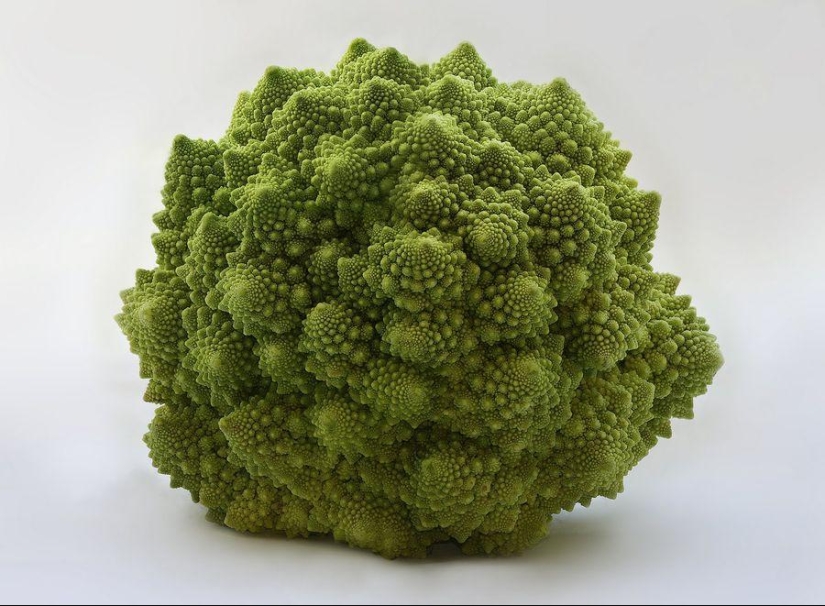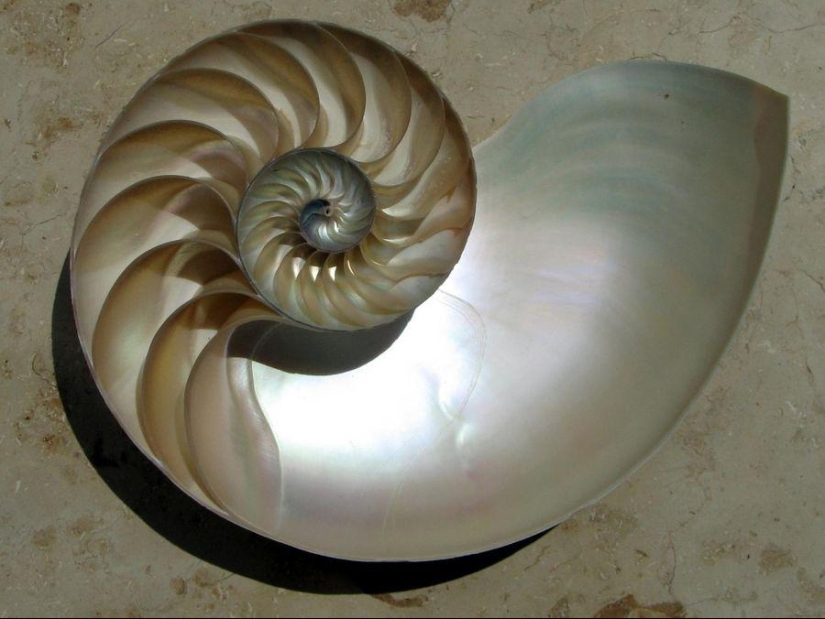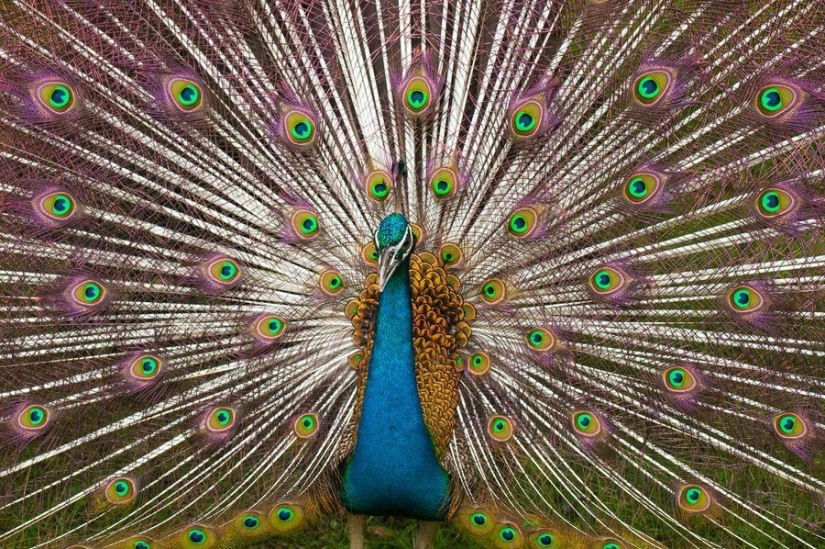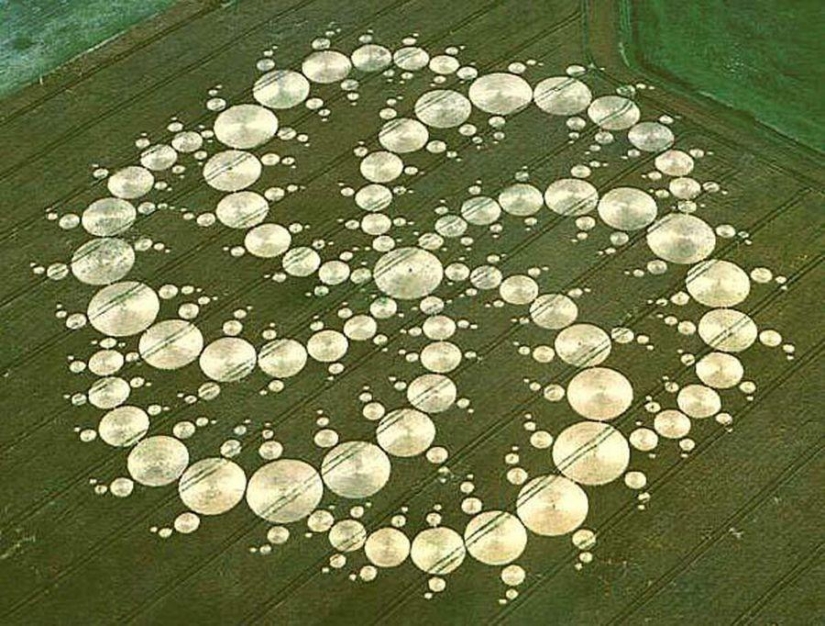10 excellent examples of symmetry in nature
For centuries, symmetry has remained a subject that fascinates philosophers, astronomers, mathematicians, artists, architects and physicists. The ancient Greeks were completely obsessed with it — and even today we tend to encounter symmetry in everything from furniture arrangement to hair cutting.

Just keep in mind: once you realize this, you will probably experience an irresistible urge to look for symmetry in everything you see.

Perhaps when you saw Romanesco broccoli in the store, you thought it was another sample of a genetically modified product. But in fact, this is another example of the fractal symmetry of nature. Each broccoli inflorescence has a logarithmic spiral pattern. Romanesco looks like broccoli, and in taste and consistency — like cauliflower. It is rich in carotenoids, as well as vitamins C and K, which makes it not only beautiful, but also healthy food.

For thousands of years, people have marveled at the perfect hexagonal shape of the honeycomb and asked themselves how bees can instinctively create a shape that humans can reproduce only with a compass and ruler. How and why do bees have a passionate desire to create hexagons? Mathematicians believe that this is an ideal form that allows them to store the maximum possible amount of honey using the minimum amount of wax. Anyway, it's all a product of nature, and it's pretty damn impressive.

Sunflowers boast radial symmetry and an interesting type of symmetry known as the Fibonacci sequence. The Fibonacci sequence: 1, 2, 3, 5, 8, 13, 21, 34, 55, 89, 144 etc. (each number is determined by the sum of the two previous numbers). If we took our time and counted the number of seeds in a sunflower, we would find that the number of spirals is growing according to the principles of the Fibonacci sequence.There are a lot of plants in nature (including Romanesco broccoli) whose petals, seeds and leaves correspond to this sequence, which is why it is so difficult to find a clover with four leaves.But why do sunflower and other plants follow mathematical rules? Like the hexagons in the hive, it's all a matter of efficiency.

In addition to plants, some animals, such as the Nautilus, respond to the Fibonacci sequence. The Nautilus shell twists into a "Fibonacci spiral". The shell tries to maintain the same proportional shape, which allows it to maintain it throughout life (unlike people who change proportions throughout life). Not all Nautilus have a shell built according to the rules of Fibonacci, but they all correspond to a logarithmic spiral.
Before you envy the math clams, remember that they don't do this on purpose, it's just that this form is the most rational for them.

Most animals have bilateral symmetry, which means that they can be divided into two identical halves. Even humans have bilateral symmetry, and some scientists believe that human symmetry is the most important factor that affects the perception of our beauty. In other words, if you have a lopsided face, then we can only hope that this is compensated by other good qualities.
Some reach complete symmetry in an effort to attract a partner, for example, a peacock. Darwin was positively annoyed by this bird, and wrote in a letter that "The sight of feathers in the tail of a peacock, whenever I look at it, makes me sick!" To Darwin, the tail seemed burdensome and had no evolutionary meaning, since it did not correspond to his theory of "survival of the fittest". He was furious until he came up with the theory of sexual selection, which states that animals develop certain functions to increase their chances of mating. Therefore, peacocks have various adaptations to attract a partner.

There are about 5,000 types of spiders, and they all create an almost perfect circular web with radial supporting threads at almost equal distances and a spiral fabric for catching prey. Scientists are not sure why spiders are so fond of geometry, as tests have shown that a round cloth will not lure food better than an irregularly shaped cloth. Scientists suggest that radial symmetry evenly distributes the force of impact when the victim hits the net, resulting in fewer gaps.

Give a couple of cheaters a board, mowers and saving darkness, and you will see that people also create symmetrical shapes. Due to the fact that crop circles are distinguished by the complexity of the design and incredible symmetry, even after the creators of the circles confessed and demonstrated their skills, many people still believe that space aliens did it.
As the circles become more complex, their artificial origin becomes more and more clear. It is illogical to assume that the aliens will make their messages more and more difficult when we have not been able to decipher even the first of them.
Regardless of how they appeared, crop circles are nice to look at, mainly because their geometry is impressive.

Even such tiny formations as snowflakes are regulated by the laws of symmetry, since most snowflakes have hexagonal symmetry. This is particularly due to the way water molecules line up when they solidify (crystallize). Water molecules acquire a solid state, forming weak hydrogen bonds, they align in an ordered arrangement that balances the forces of attraction and repulsion, forming a hexagonal snowflake shape. But at the same time, each snowflake is symmetrical, but no snowflake is like another. This is because falling from the sky, each snowflake experiences unique atmospheric conditions that cause its crystals to be arranged in a certain way.

As we have already seen, symmetry and mathematical models exist almost everywhere, but are these laws of nature limited to our planet? Obviously not. A new section has recently been discovered at the edge of the Milky Way Galaxy, and astronomers believe that the galaxy is an almost perfect mirror image of itself.

Considering that the Sun has a diameter of 1.4 million km and the Moon is 3474 km, it seems almost impossible that the Moon can block sunlight and provide us with about five solar eclipses every two years. How does it work? Coincidentally, along with the fact that the width of the Sun is about 400 times larger than the Moon, the Sun is also 400 times farther away. The symmetry ensures that the Sun and Moon are the same size when viewed from Earth, and therefore the Moon can cover the Sun. Of course, the distance from the Earth to the Sun can increase, so sometimes we see annular and incomplete eclipses.
Every one to two years there is an exact alignment, and we witness spectacular events known as a total solar eclipse. Astronomers don't know how common such symmetry is among other planets, but they think it's a pretty rare phenomenon. However, we should not assume that we are special, since this is all a matter of chance. For example, every year the Moon moves away about 4 cm from the Earth, which means that billions of years ago every solar eclipse would have been a total eclipse. If everything goes on like this, then total eclipses will eventually disappear, and this will be accompanied by the disappearance of annular eclipses. It turns out that we are just in the right place at the right time to see this phenomenon.
Recent articles

Sometimes, just one clever angle is enough to turn an ordinary shot into a puzzle. This collection features 22 photos where ...

The history of the Blanchard family happened back in 2015, but it is still being talked about. The brutal murder of Dee Dee ...

Oscar Wilde once said, "Life imitates art even more than art imitates life." And after viewing the photos that we have collected ...